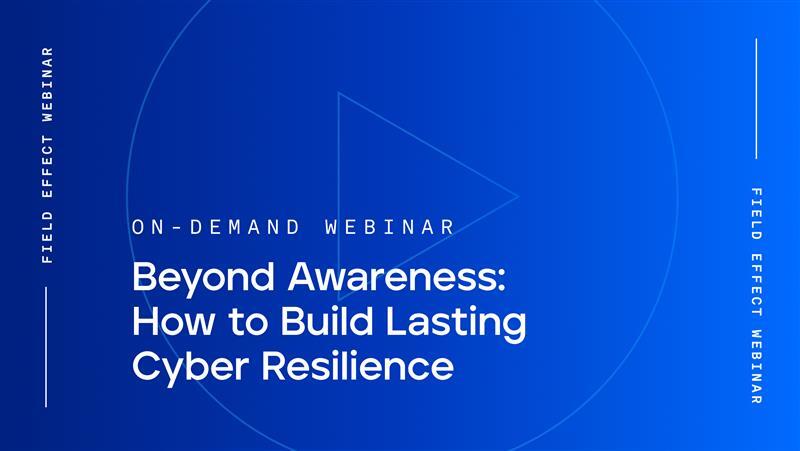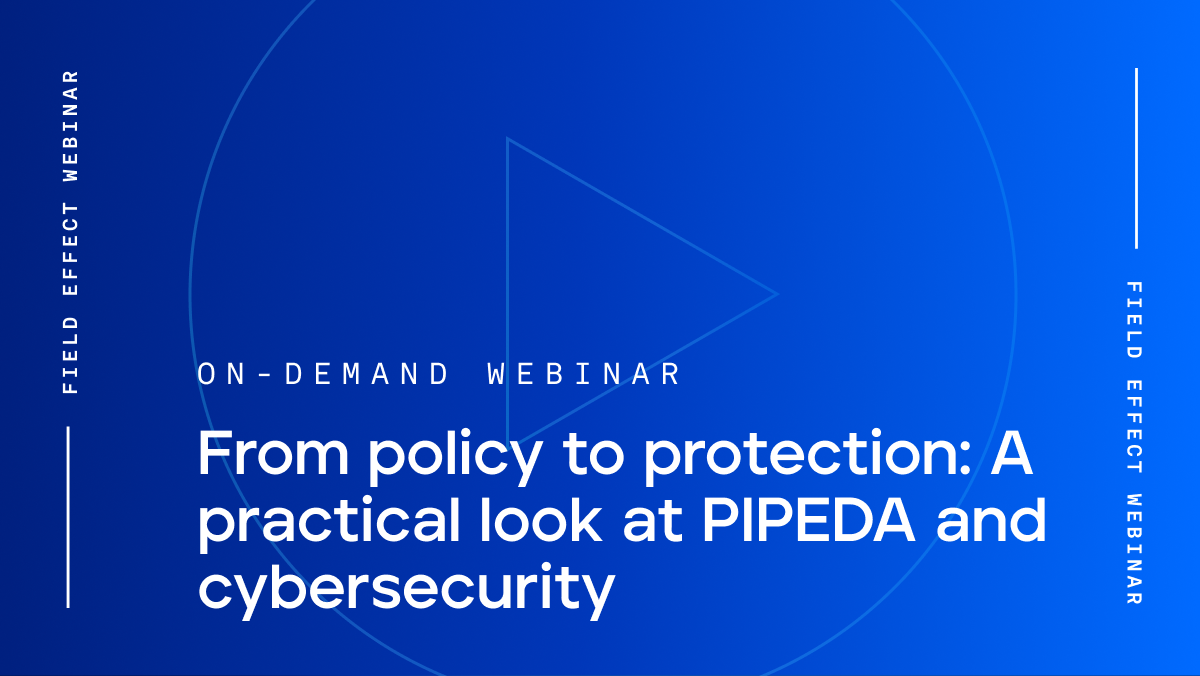
Blog Post
Since just a single data breach costs an average of $4.45 million to recover from, it’s more important than ever for professionals to understand key cybersecurity risks.
But with the sheer number of evolving threats, staying informed can feel overwhelming. Some cyber risks receive plenty of attention. Others fly under the radar—despite being just as dangerous. Malvertising falls into the latter category.
So, what is malvertising? And how does it actually work?
This blog breaks down the threat, explains how malvertising targets businesses, and outlines practical steps you and your employees can take to stay protected.
Malvertising—short for malicious advertising—is the use of online ads to deliver malware to unsuspecting users. These seemingly legitimate ads are designed to trick users into clicking, triggering a download or redirect that installs malware on their device.
Once installed, that malware can steal sensitive data, corrupt files, or open the door for a ransomware attack.
Here’s how a malvertising attack can unfold in the workplace:
Malvertisements can appear anywhere—even as the first result in a search engine or on trusted sites like major news outlets and social media platforms. Cybercriminals use the same digital ad networks as legitimate businesses, which makes these attacks especially difficult to detect.
Clicking on one of these ads can lead to an automatic malware download or redirect to a phishing site designed to steal login credentials or financial information. That’s why even a routine search can turn into a serious security threat.
While malvertising and adware are often confused, they serve very different purposes—and only one is always malicious.
Malvertising is intentionally harmful. It delivers malware through digital ads, often without the user even realizing it.
Adware, on the other hand, is designed to collect data about a user’s browsing habits to serve personalized advertisements. While often annoying, adware isn’t always dangerous.
That said, adware can blur the line. Cybercriminals sometimes use it to gather intel on a user’s behavior, laying the groundwork for more targeted attacks. Still, adware is also used by legitimate companies for marketing purposes—malvertising never is.
A recent malvertising campaign, reported by Field Effect security analysts, illustrates how cybercriminals exploit trusted tools to distribute malware.
In this case, attackers created a fake website mimicking the legitimate RVTools download page—a popular VMware utility. They promoted this counterfeit site through sponsored Google ads, ensuring it appeared prominently in search results. Unsuspecting users who clicked the ad were directed to the fraudulent site, which closely resembled the official one.
Upon downloading and installing the software from this site, users inadvertently executed a trojanized version of RVTools. This compromised installer deployed ThunderShell, a PowerShell-based remote access tool (RAT) that established a connection with the attackers' command-and-control server.
This connection allowed threat actors to execute arbitrary commands on the infected systems, potentially leading to data theft, system compromise, or further malware deployment.
This incident underscores the deceptive nature of malvertising campaigns and the importance of verifying download sources. Even seemingly legitimate ads can lead to malicious content, emphasizing the need for vigilance and robust cybersecurity measures.
The rise of remote and hybrid work has reshaped how businesses operate—and how threat actors target them. With more employees relying on cloud-based tools, the number of online searches and software downloads has surged. That increased traffic creates a perfect storm for cybercriminals looking to exploit popular search terms and tools.
Malvertising takes advantage of this shift.
Besides, it’s never been easier—or more affordable—to place digital ads. Cybercriminals can purchase sponsored ad space just like any business, embedding malicious links in paid search results or banner ads on high-traffic websites.
This flips the script: instead of seeking out victims, attackers use ad networks to bring victims to them.
Because malvertising blends seamlessly with legitimate advertising and disguises malicious content behind familiar branding, it’s an effective way to deliver malware without raising suspicion. As users become more aware of phishing emails and obvious scams, these subtler tactics are likely to grow even more common.
Malvertising can be deceptively convincing. Because malicious ads often appear on trusted websites or mimic legitimate tools and brands, spotting them isn’t always straightforward.
For instance, a fake website may perfectly replicate a well-known tool’s interface, with only a small typo in the URL. And when a legitimate site is compromised, there’s usually no visible indication that a file download is dangerous.
Even with these challenges, protecting your organization from malvertising is entirely possible—with the right awareness and strategies.
A key defense against malvertising is URL awareness. Cybercriminals often build lookalike websites using subtle tricks—swapping an “m” with an “n,” adding a hyphen, or changing a single character to deceive users.
While even the most attentive employee can make a mistake, it’s critical that your team understands how to verify URLs before clicking. Encouraging this simple habit can prevent costly errors.
One practical tip: ask employees to bookmark frequently used sites. Whether it’s a login portal, software platform, or secure internal tool, using a trusted link removes the need to search—avoiding the risk of clicking on a malicious ad or counterfeit page.
Outdated software is one of the most common entry points for cyberattacks. Microsoft reports that up to 80% of cybersecurity attacks stem from unmanaged devices—often because they’re running unpatched or outdated systems with known vulnerabilities.
While software updates won’t block all malvertising attempts, they do strengthen your defenses. Updates often include new indicators of compromise—like suspicious domains or IP addresses—that help security tools detect and block malicious activity.
Encourage employees to enable automatic updates on their devices. This ensures critical patches are applied promptly, even if someone forgets to do it manually.
Keeping software current adds another layer of protection. Even if malware is downloaded, up-to-date systems are far less likely to be exploited—limiting an attacker’s ability to infiltrate your network.
Avoiding downloads from unfamiliar websites is a good start—but it’s not always enough.
One form of malvertising redirects users from legitimate websites to sites that host malware through Flash and Java files. If your computer automatically runs these programs, it may download the malicious files from the site even if you try to exit it as soon as you arrive.
A notable example is the Shlayer malware, which has been active since at least 2018. Attackers distribute Shlayer through deceptive ads that prompt users to update Adobe Flash Player. These ads often appear on legitimate websites, and clicking on them leads to the installation of malware disguised as a Flash update. Once installed, Shlayer can download additional malicious software, compromising the user's system.
To protect against such threats, it's crucial to disable the automatic execution of potentially risky content like Flash and Java. Ensure that your browser settings require manual approval before running these types of content, and only proceed when you're confident about the source's legitimacy.
Ad blockers and firewalls play a key role in defending against malvertising. By filtering out harmful content before it reaches the user, these tools reduce the risk of accidental clicks and malicious downloads.
Ad blockers help by removing ads from web pages entirely—including the malicious ones that mimic trusted brands. For example, if an employee searches for your company’s CRM tool, a malicious ad posing as the login portal could appear at the top of the search results. With a reputable ad blocker installed, that ad likely never appears—eliminating the threat before it starts.
Firewalls offer another layer of protection. Traditional firewalls monitor incoming and outgoing traffic, flagging suspicious activity. Modern solutions go even further, offering browser-based extensions that warn or block access to potentially dangerous websites in real time—based on customized policies or threat intelligence.
Together, these tools reduce exposure to malvertising and limit the impact of user error.
Many malvertising campaigns redirect users to fake websites that closely resemble legitimate ones. While these lookalike sites can be convincing at first glance, they often contain subtle clues that something’s not right.
Even when skilled cybercriminals are behind malvertising, the websites they spoof will often have obvious flaws once you start looking for them. This can include:
Even if a site looks almost identical to the real thing, users may notice something feels off. Encourage employees to trust that instinct. When in doubt, escalate to a security expert. It’s far safer to investigate a false alarm than to risk exposing your network.
Employee education goes a long way in reducing malvertising risk—but even the most informed teams can’t catch everything. Sophisticated attacks often bypass human judgment and require advanced tools to detect and stop them.
That’s why every organization needs a cybersecurity solution that continuously monitors its environment—across endpoints, cloud services, and networks—and flags suspicious, malicious, or anomalous activity in real time.
Just as important is the ability to respond quickly when threats emerge. Larger enterprises may have dedicated security teams to manage incidents, but for small and mid-sized businesses, that’s often unrealistic.
This is where managed detection and response (MDR) tools come in.
MDR solutions act as a virtual security operations center. They detect threats, provide high-fidelity alerts, and guide or execute the response. This offers businesses 24/7 coverage without the complexity and cost of building an in-house team.
As more business takes place online, cybersecurity is more critical than ever. Educating users about threats like malvertising is a strong starting point—but awareness alone isn’t a full defense.
That’s where Field Effect MDR makes the difference.
Field Effect MDR is a managed detection and response platform built to deliver comprehensive protection. Backed by cybersecurity experts, it monitors your entire environment 24/7—identifying threats, analyzing risks, and responding to incidents in real time.
Whether it’s endpoint detection, network monitoring, or continuous threat hunting, Field Effect MDR brings everything together in a single solution—making effective cybersecurity achievable for any organization.
Want to see it in action? Watch our quick three-minute Field Effect MDR tutorial and discover how it helps you strengthen security while reducing complexity.


